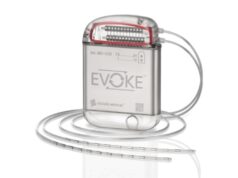The ability of spinal cord stimulation to affect spike-and-wave discharges has been suggested as a means to mitigate epileptic seizures in recent literature. In an attempt to map the relationship between spinal cord stimulation frequency and spike-and-wave discharges, researchers from Aalborg University (Aalborg, Denmark) measured their effects in rats.
Pentylenetetrazole was used in nine rats to induce spike-and-wave discharges. Four frequencies (30, 80, 130 and 180Hz) of spinal cord stimulation were delivered by means of a cervical-level epidural electrode. Electrocorticographic and intracortical signals were analysed to derive normalised spike-and-wave discharges and frequency—data which were used to project the severity of seizures. These results were measured against control intervals without stimulation.
The researchers observed significant increases in normalised spike-and-wave spike power and frequency when spinal cord stimulation was conducted at 30Hz, whilst no significant changes were noted at 80Hz stimulation. Conversely, decreases in both normalised spike-and-wave spike power and frequency were induced by 130 and 180Hz stimulation frequencies.
The authors noted that the observed reductions “may indicate an anticonvulsive effect of these spinal cord stimulation frequencies, whereas 30Hz spinal cord stimulation induced the opposite effects and, therefore, may be proconvulsive.
The study was published in the journal Neuromodulation.









